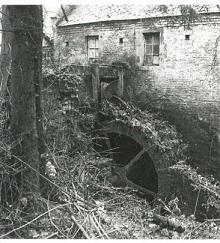The history of photography
People have always had a need for preservation of moments. They sought an alternative for time-consuming and expensive paintings. Paintings were created by employed craftsmen - painters. This alternative proved to be a photography. Photography is a recording of any image with the help of light. The history of photography consists of a number of important discoveries. Through the method of trial and error people eventually elaborated this technique to mastery.

It all started with a small device, the camera obscura (Latin. a dark room). It was the prototype of the camera, allowing to get the real picture. It is assumed that its creator was Ibn al - Hajsam, Islamic physics, dealing with the collapse and propagation of solar radiation and optics. Albert the Great, who lived between the XII and XIII century, discovered the inorganic chemical compound, which had oxidizing properties, nitrate of silver. In the photographic technique, it applies the light-sensitive substance, which was observed not before XVIII century by Johann Heinrich Schulze. In the meantime, about the year 1556, Georg Fabricius made accurate observation that under the influence of the sun silver chloride blackens.
The date of establishment of the first photograph is year 1826. Its author was a French physicist and inventor, Joseph Nicéphore Niépce. The picture was on a polished plate made of zinc, covered with a bituminous substance having acid resistant properties, which was a syrian asphalt. In 1839 the coworker of already dead at that time Joseph Nicéphore Niépcea, Louis Jacques Daguerre announced to the world that with the help of copper and silver plate he discovered an interesting process, named after his name, daguerreotype. Around the same time, English scientist William Henry Fox Talbot was also interested in photography and he discovered a process called calotype. The result was the invention of the negative, thanks to which it was possible to create any number of copies of the image. Soon after, the process invented by Talbot was defined by J. Herschel as photography.
Since then, the technique of photography developed very dynamically. Most of the innovations were to improve existing processes. Soon the silver plates were replaced by glass ones, which were previously covered with a photo resist layer. Then it was replace with celluloid, because in 1884 the so-called "dry gel" was invented by George Eastman. Thanks to this invention photographers were not forced to constantly carrying a photographic plate or other chemical compounds. This moment is considered to be a breakthrough in the history of photography, because from this time began the popularization of photography in the world.
Contemporary photography is working on both the photochemical methods, known more as an analogue photography, and photoelectric phenomena, that is digital photography. Creating a bitmap image (using a digital camera) is a simpler and more convenient procedure, and therefore it is more popular among amateurs of photography.